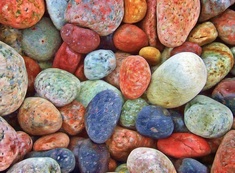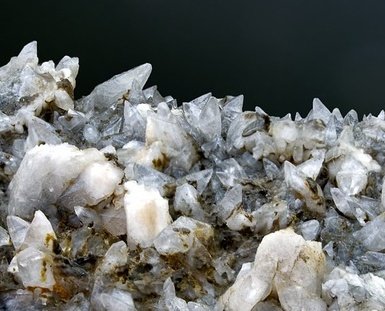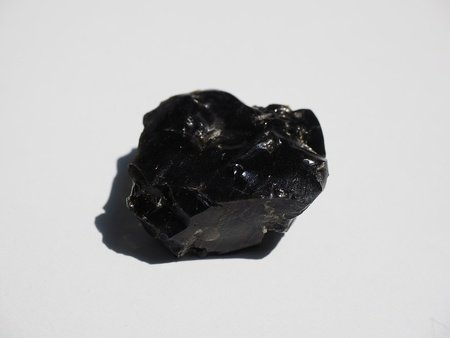
All about...#42 - Rocks
Last updated: Sunday September 26th, 2021
Report this blog

ALL ABOUT ROCKS
Brought to you by MrBLOGGER
Introduction
Rocks, the noun, is probably one of the most important things that is on planet Earth. Rocks are what lets us build skyscrapers, entire cities, and mankind. There are hundreds of types of Rocks, which play an important role in the history of Earth. If it weren't for rocks, Earth would not be the same. Let me teach you lots about rocks, in a cool and fun way!
Sedimentary Rocks
Sedimentary Rocks are the first types of rocks that we are going to cover.
How are they formed?
Sedimentary rocks are formed by the accumulation and eroding of different, earlier rocks. They can also form through cementation, as materials bond together. That explains why sedimentary rocks can have a wide variety of origins and can even contain dead organisms. Before being deposited, sedimentary rocks are formed by weathering and/or erosion.
Where are they found?
You may have not realized it, but Sedimentary rocks are all around us! In lots of national parks around the USA, like the Grand Canyon, Arches, etc, all have some sort of sedimentary rock! They are pretty much anywhere that involves erosion and rocks. It is important to know that they are often formed in layers.
What are some examples?
The most common Sedimentary rocks are Sandstone, Shale, Arkose, Chert, Limestone, and Conglomerate.
Metamorphic Rocks
Next, we'll learn about Metamorphic rocks.
How are they formed?
Metamorphic rocks are formed when they are subjected to pressure or heat, they are changed. More specifically, in any part of the world, normally hot areas, they undergo heat and their shape forms into another shape and texture. This is also part of the rock cycle.
Where are they found?
Metamorphic rocks are normally found in volcanoes and mountain ranges, like the Alps, Himalayas, There not found on the surface of mountains, but deep in the core of the mountains; LATER they get exposed to the earth.
What are some examples?
Metamorphic rocks are common, but not as much as the other ones. Marble, Phyllite, Schist, Slate, Quartzite, and Gneiss. Marble and Quartzite are well-known because of their luxury and shinyness.




Igneous rocks
At last, comes Igneous rocks.
How are they formed?
Igneous rocks are formed from the cooling and hardening of magma/lava. A common sight of this is volcanoes, in which lava streams cool and form hard black rock. Igneous rock may also contain fragments of other pre-existing rocks. The rocks can either be intrusive, or when lava hardens and crystalizes, or extrusive when magma reaches the surface. Igneous rocks can be moved over time.
Where are they found?
As you may know, Igneous rocks are found on Volcanoes or any region where volcanoes or any lava/magma activity occurs. They are also found on "hotspots", which are located on some parts of continents.
What are some examples?
Igneous rocks are very common, so there are lots of examples. Basalt, Granite, Obsidian, Pegmatite, Peridotite, Pumice, Tuff, Diorite, and Pegmatite are all Igneous rocks (You might recognize some from Minecraft). Granite is probably the most well-known Igneous rock, used on countertops.




Human Use
Human use of rocks is based on two things: Mining, then building.
Mining:
Mining is the extraction of either valuable materials or geological rocks from the ground on Earth. Without mining, civilization would be in trouble. In mining, you could extract base metals, precious metals, iron, uranium, coal, diamonds, limestone, oil shale, rock salt, potash, and construction aggregate. After being mined, the materials are brought to factories to get extracted. However, mining can have a negative impact on society and the people.
Building:
There are specific types of rocks that are hard enough to be used for building. Steel is one of the most common building materials. Steel is formed by Limestone and Coal. Then there is also Stone, which has been around for thousands of years, first used by the paleolithic peoples in Africa. The Greeks, Romans, Mongolians, and almost every civilization used stone. Limestone (alone) was also common.
Fun Facts
- The noted rock Pumice can float on water
- Shale is the most abundant Sedimentary rock in the world
- The human hand cant break rocks apart, but water can
- Lots of boulders in a special region in Northern Ireland cause the Giants Causeway, a popular tourist area
- Rocks are said to be over 4.5 Billion years old
- There are rocks like Geodes that have crystals on the inside
- Carbon dating is used to find the age of rocks and other things on Earth
Ending note
Don't forget to like and subscribe to show support if you liked this blog/the entire series. It means a lot to me. I would also like to thank Fuse for that amazing blog of his and Im sorry for all the mischief I've caused. This blog is a SUMMARY so don't get mad :).Thanks so much! Here are some handy links:
My blog page: MrBLOGGER'S blog
All about series: All about blogs!!!!
My fan group: MrBloggerARMY

This comment wasn't not sponsored by Grammarly. Sign up for Grammarly Premium with the code BREAD to get 30% off your first purchaseso it was sponsored-cancels-